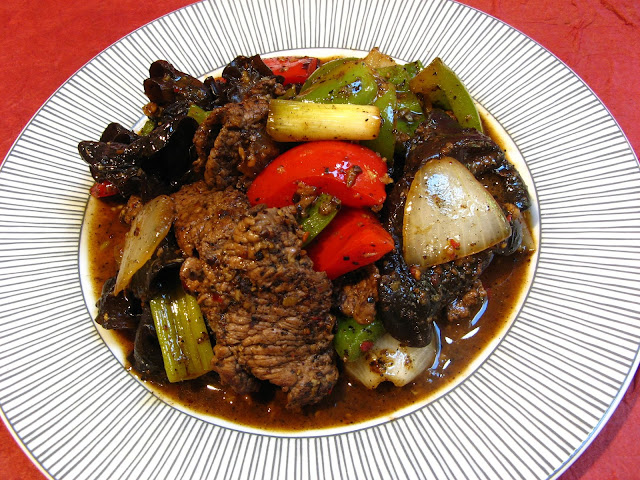Twice cooked pork is a dish using pork belly and Doubanjiang,
which is a spicy fermented broad bean paste. If you search on the internet for a
twice cooked pork recipe, you’ll find many variations in the use of
ingredients. This particular variation has fuzzy melon and fish cakes. The one
common ingredient is Doubanjiang, which can be purchased at your local Asian market.
Broad beans are fermented with spices and red chilies to produce this paste.
The more famous producers are based in Sichuan Province in the People’s
Republic of China. Broad beans are not soy beans, so soy bean based pastes does
not have the same flavor as Doubanjiang. The sauce for this dish is the Doubanjiang
and it should look dry (meaning that there’s not a lot of liquid).
Twice cooked means that the pork (or other meat) is first
boiled and then stir fried. Pork belly is the traditional meat used and it’s
ideal to make this dish. The pork belly should still have the skin attached and
be a single (or large) pieces, i.e. the pork belly shouldn’t be sliced into
pieces before being boiled. The pork belly can be boiled and then refrigerated one
day before the dish is to be made. Cut the pork belly into thin slices before
stir frying. What’s different about this dish’s preparation is that the sliced
pork belly is stir fried in the Doubanjiang, after the Doubanjiang itself is
stir fried to deepen the color and flavor.
Enjoy!






